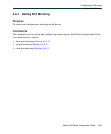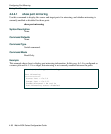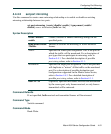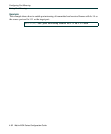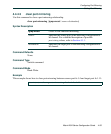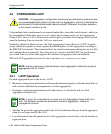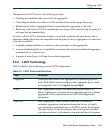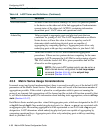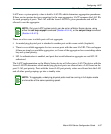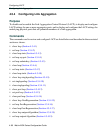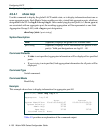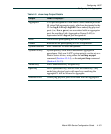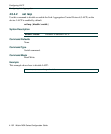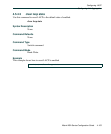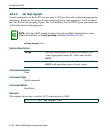
Configuring LACP
Matrix Series Usage Considerations
Matrix NSA Series Configuration Guide 4-97
LACP uses a system priority value to build a LAG ID, which determines aggregation precedence.
If there are two partner devices competing for the same aggregator, LACP compares the LAG IDs
for each grouping of ports. The LAG with the lower LAG ID is given precedence and will be
allowed to use the aggregator.
There are a few cases in which ports will not aggregate:
• An underlying physical port is attached to another port on this same switch (loopback).
• There is no available aggregator for two or more ports with the same LAG ID. This can happen
if there are simply no available aggregators, or if none of the aggregators have a matching admin
key and system priority.
• 802.1x authentication is enabled, and ports that would otherwise aggregate are not 802.1X
authorized.
The LACP implementation on the Matrix Series device will allow into a LAG. The device with the
lowest LAG ID determines which underlying physical ports are allowed into a LAG based on the
ports’ LAG port priority. Ports with the lowest LAG port priority values are allowed into the LAG
and all other speed groupings go into a standby state.
NOTE: Only one LACP system priority can be set on a Matrix Series device, using
either the set lacp asyspri command (Section 4.5.4.4), or the set port lacp command
(Section 4.5.4.13).
NOTE: To aggregate, underlying physical ports must be running in full duplex mode
and must be of the same operating speed.



